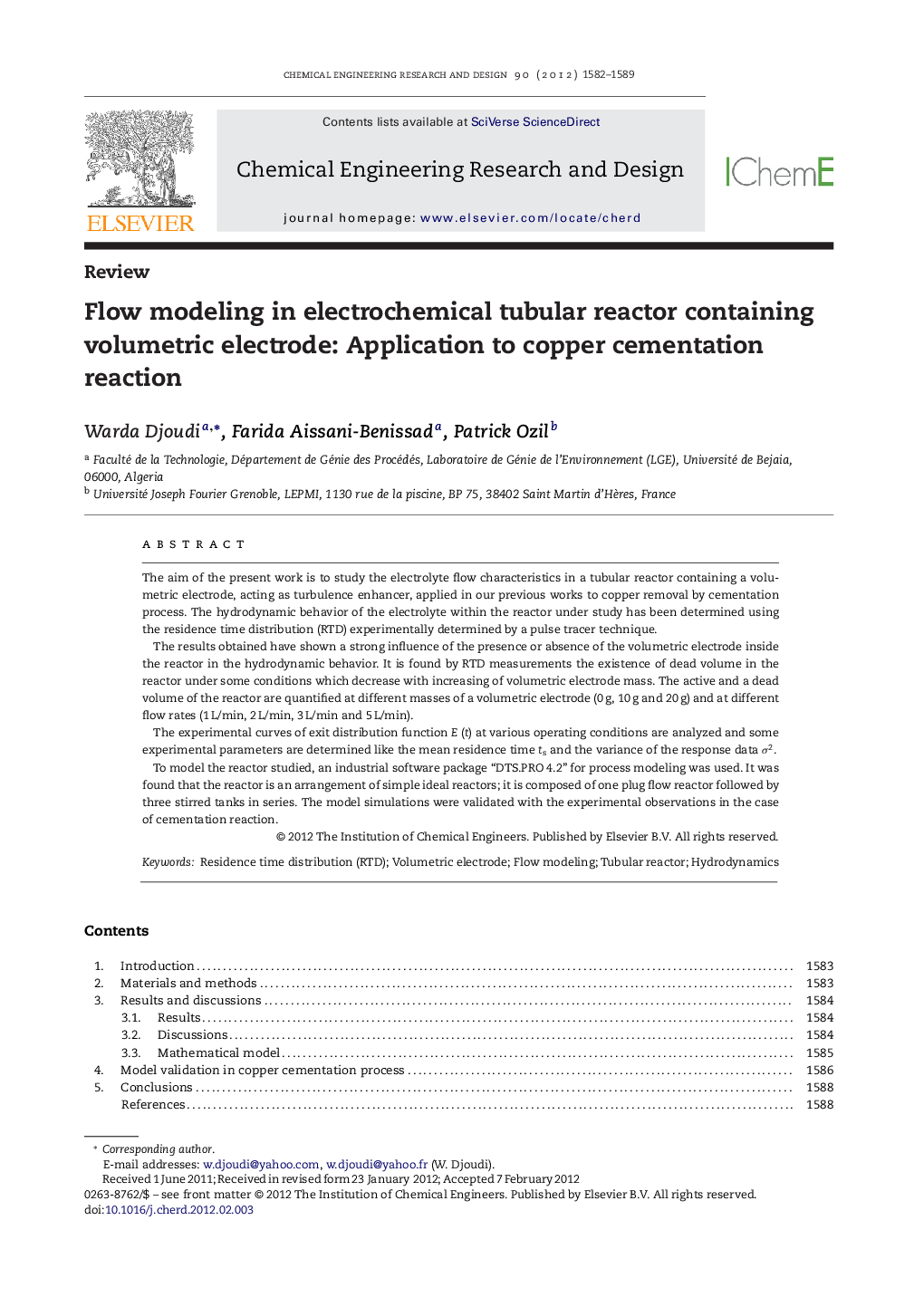| Article ID | Journal | Published Year | Pages | File Type |
|---|---|---|---|---|
| 620927 | Chemical Engineering Research and Design | 2012 | 8 Pages |
The aim of the present work is to study the electrolyte flow characteristics in a tubular reactor containing a volumetric electrode, acting as turbulence enhancer, applied in our previous works to copper removal by cementation process. The hydrodynamic behavior of the electrolyte within the reactor under study has been determined using the residence time distribution (RTD) experimentally determined by a pulse tracer technique.The results obtained have shown a strong influence of the presence or absence of the volumetric electrode inside the reactor in the hydrodynamic behavior. It is found by RTD measurements the existence of dead volume in the reactor under some conditions which decrease with increasing of volumetric electrode mass. The active and a dead volume of the reactor are quantified at different masses of a volumetric electrode (0 g, 10 g and 20 g) and at different flow rates (1 L/min, 2 L/min, 3 L/min and 5 L/min).The experimental curves of exit distribution function E (t) at various operating conditions are analyzed and some experimental parameters are determined like the mean residence time ts and the variance of the response data σ2.To model the reactor studied, an industrial software package “DTS.PRO 4.2” for process modeling was used. It was found that the reactor is an arrangement of simple ideal reactors; it is composed of one plug flow reactor followed by three stirred tanks in series. The model simulations were validated with the experimental observations in the case of cementation reaction.
► The hydrodynamic behavior of the electrolyte in tubular reactor containing volumetric electrode is determined using the residence time distribution method. ► Flow profile approaches to plug flow when the reactor works at high flow rate (5 L/min) and important electrode mass (20 g). ► The arrangement of one plug flow reactor and three stirred tank reactors in series appeared to be the most suitable to describe hydrodynamics of the reactor under study. ► Model simulations were validated with the experimental observations in the case of cementation reaction.
